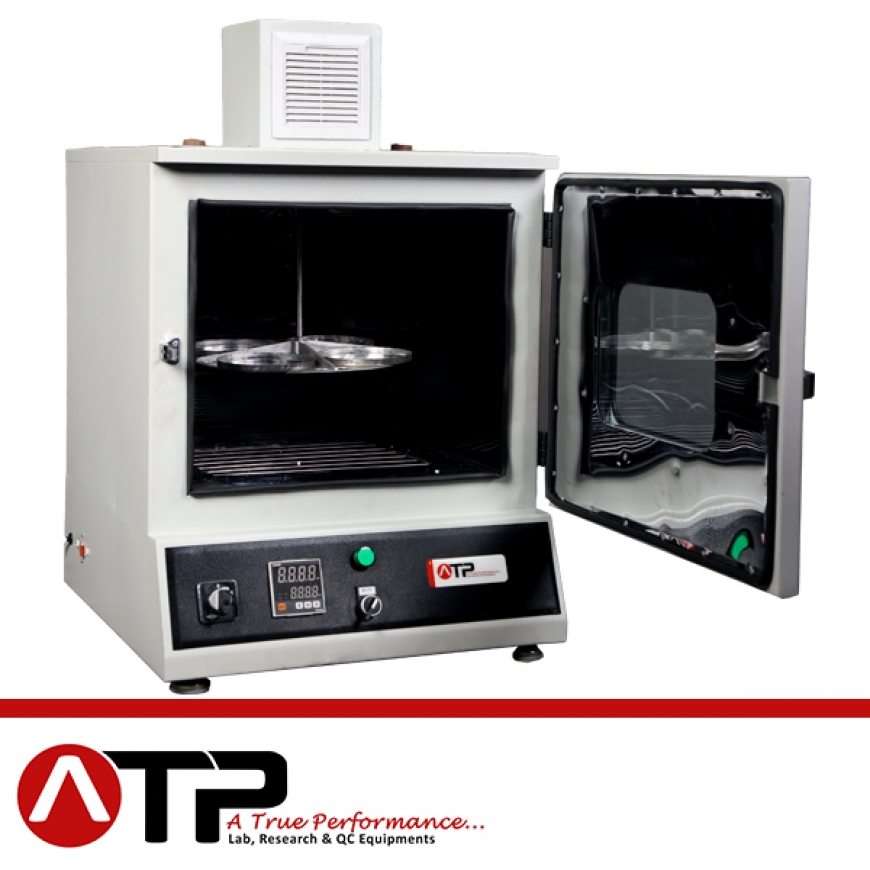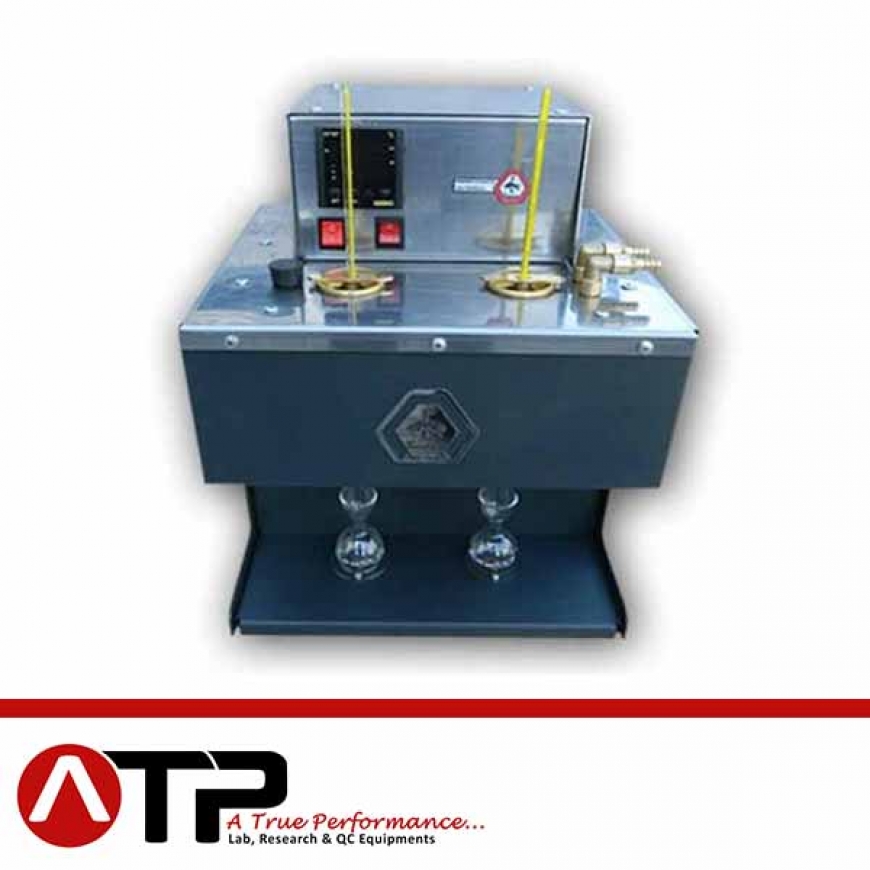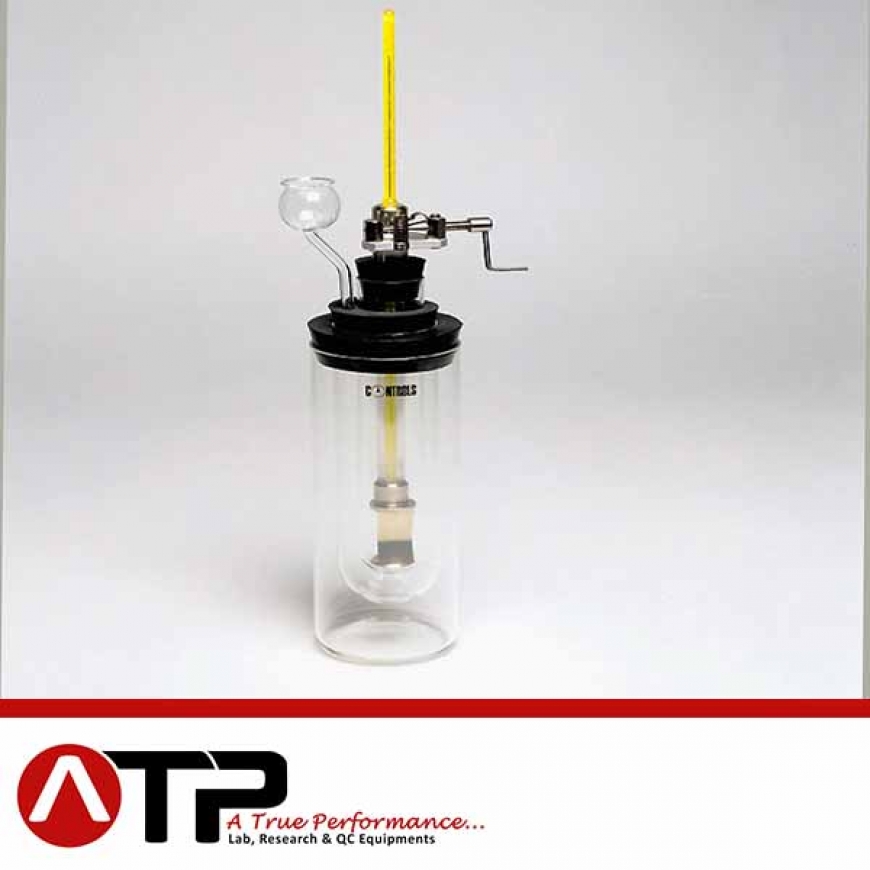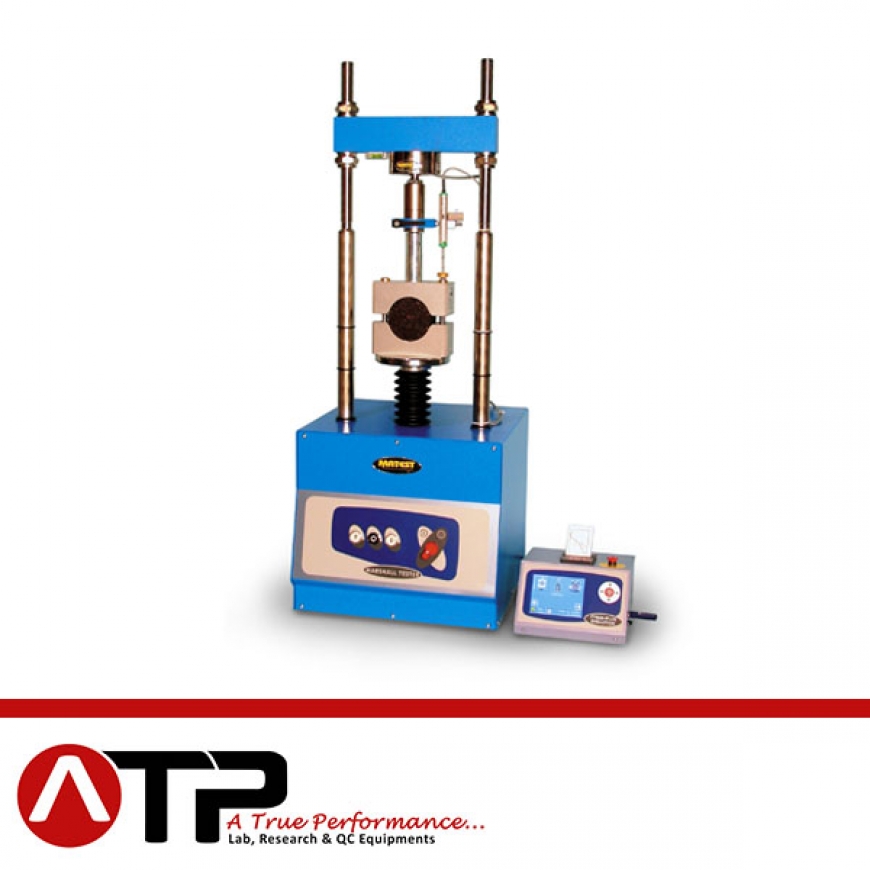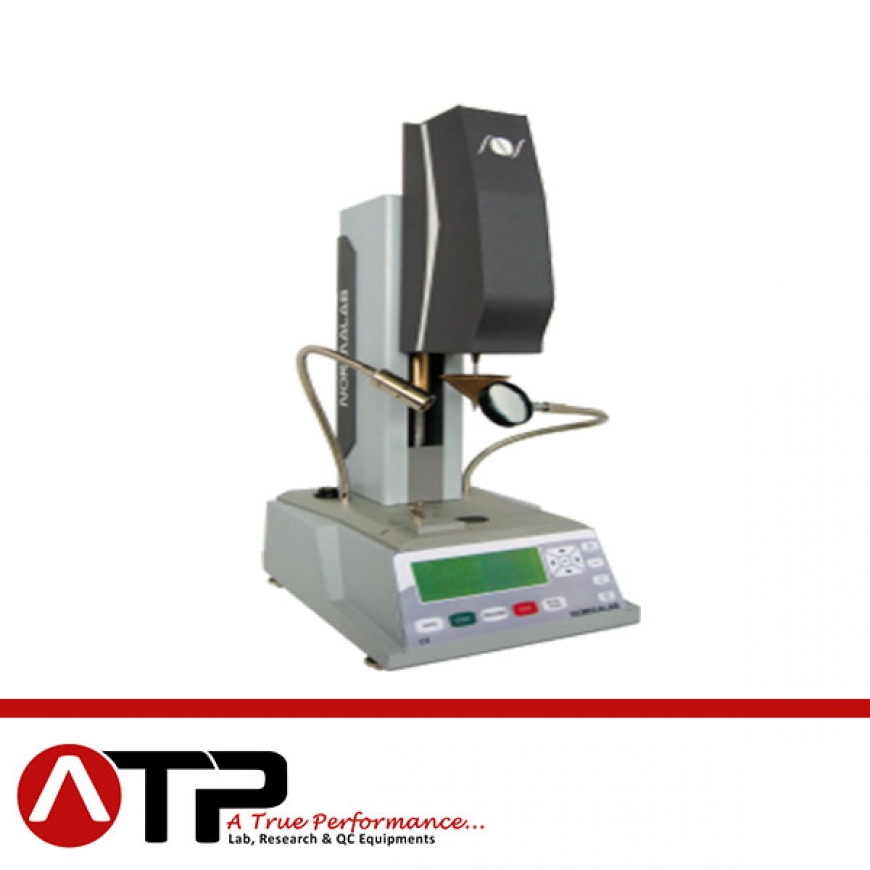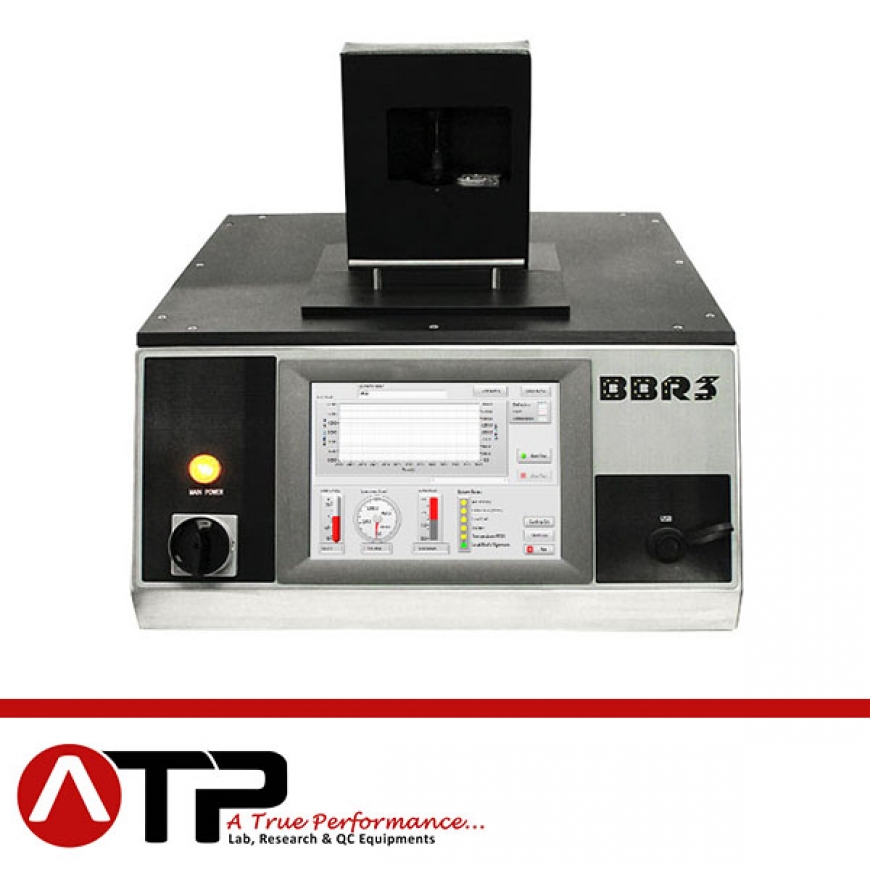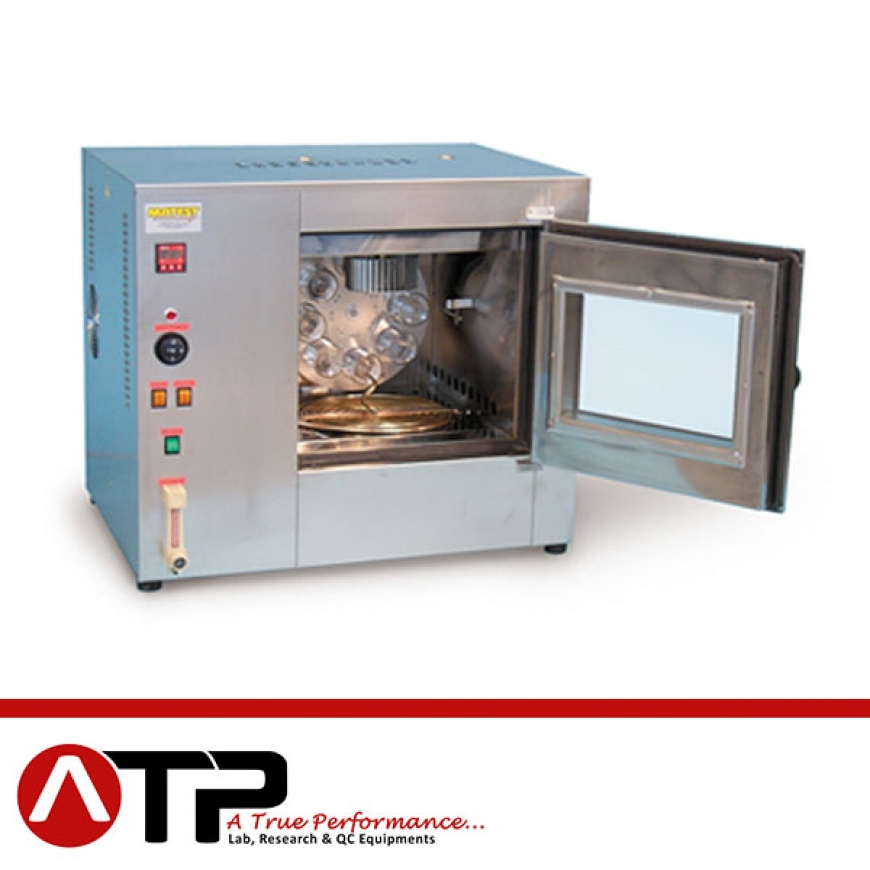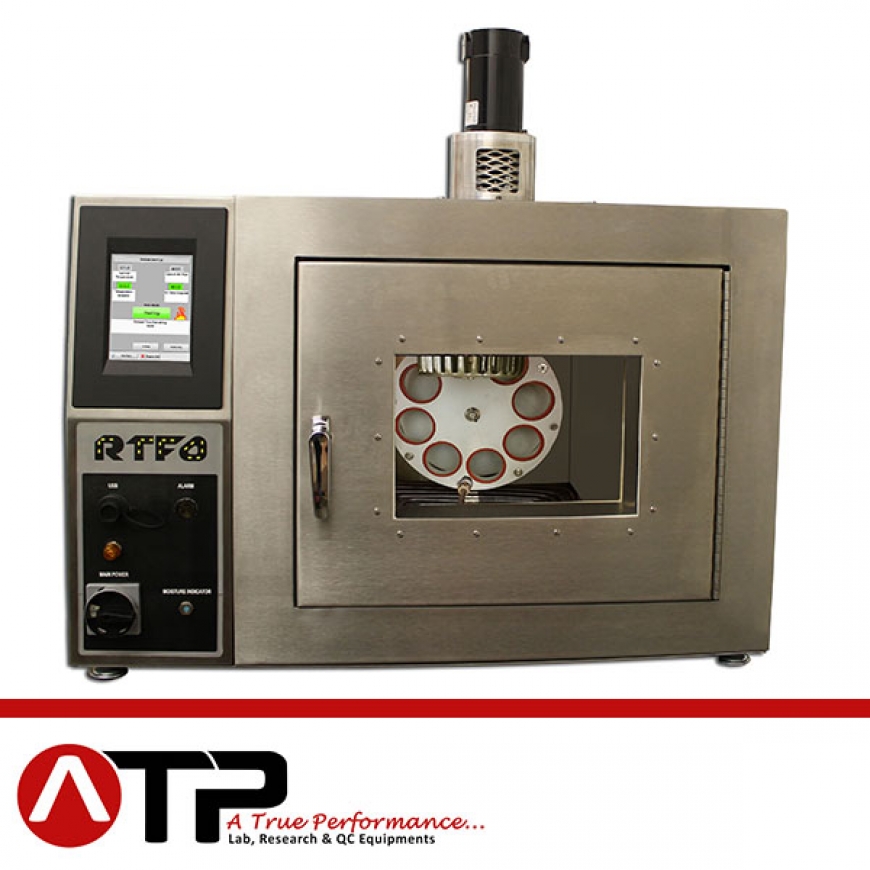Quick Find Products
Thin Film Oven Test (TFOT)
THIN FILM AND LOSS ON HEATING DETERMINATION (TFOT)
Internal chamber made of stainless steel, double wall insulation with fiberglass, double door.
Temperature control by digital thermoregulator. The plate rotates at 5-6 rpm.
The oven is supplied with rotating shelf with 4 containers diameter 140x9.5 mm.
Power supply: 230 V 1 ph 50 Hz 1500 W
Internal dimensions: 470x470x380 mm
Outside dimensions: 580x620x900 mm
Weight: 45 kg
Two-tube-saybolt-Viscometer
Used to determine the viscosity of petroleum products at specified temperatures between 70 to 210 °F. Stainless steel made, the Saybolt viscometer is supplied complete with two interchangeable orifices “Furol” and “Universal”, oil bath, electric heater with digital thermoregulator, stirrer, cooling coil, viscosity flask.
Thermometers, filter funnel, withdrawal tube “are not included” and must be ordered separately.
The viscometer is equipped of a dual safety thermostat to prevent accidental over-heatings.
Breaking point apparatus ''Fraas"
Used for determining the breaking point of solid and semi-solid bitumens. The Fraas Breaking Point is the temperature at which bitumen first becomes brittle, as indicated by the appearance of cracks when a thin-film of the bitumen on a metal plaque is cooled and flexed in accordance with specified conditions.
The apparatus consists of a bending device, a plaque made of springly stainless steel 41x20x0.15 mm, a cooling device, a thermometer IP 42 C, a plate and stand.
Laboratory Vacuum Pump
Laboratory Vacuum Pump
MARSHALL DIGITAL MACHINE 30 KN
The testing frame is the same as for mod. B042 KIT, but the load is measured by an electric cell 50 kN capacity with high precision strain transducers; the flow is measured by an electronic displacement transducer 50 mm stroke and ± 0,1% linearity.
The Cyber-Plus Evolution 8 channels digital display unit with microprocessor measures and displays at the same time the stability in kN and the flow in mm with pick hold
features with the possibility to transfer them to a PC and a printer through a RS232 port.
Supplied complete with Stability mould.
Power supply: 230 V 1 ph 50 Hz 900 W
Dimensions: 650x400x1100 mm.
Weight: 120 kg
Automatic Penetrometer
|
Scope This test method covers determination of the penetration of semi-solid and solid bituminous materials |
|||
|
|||
Holder for accessories, magnifying lens and low voltage illuminator, centering guide with screw and nut, power cord, set of 2 fusibles, RS232C output, accessories for automatic level detection for conductive sample comprising probe cable, mini grip & test probe and instruction manual. |
Digital Bending Beam Rheometer
The new and improved Applied Test Systems (ATS) Bending Beam Rheometer 3 (BBR3) has been designed to perform flexural tests on asphalt binder and similar specimens per AASHTO T 313, AASHTO TP 87, ASTM D6648, and BS EN 14771 specifications as part of the PG grading system according to Superpave. An ATS original, the BBR3 is the first of its kind to offer a state of the art internal computer system incorporating touchscreen technology. Programmable test parameters allow users to input and save their own unique settings, allowing the BBR3 to satisfy a diverse range of testing applications.
The BBR3 is made up of a fluid bath base with a built-in touchscreen computer, load frame, external refrigeration unit, and a calibration kit with carrying case. During operation, a known force is applied to the center of a horizontally supported specimen beam submerged in a cold liquid bath while internal software calculates the flexural creep stiffness of the beam. Used in part to determine a sample’s critical cracking temperature and low temperature PG grade, the BBR3’s -40⁰C to 25⁰C temperature range is efficiently calculated by a platinum RTD measuring device. The 500g load cell and changeable specimen supports easily transition the BBR3 for crack sealant testing. A free standing refrigeration ensures that the cooling fluid maintains a constant temperature.
The external computer and software bundle that came with the previous ATS BBR model has been replaced by the BBR3’s cutting edge, internal computer and newly designed software. An industrial strength, 12 inch touchscreen display provides immediate access and guides users through the test, set-up, verification, and standardization process. Air regulation and temperature control are now digitally monitored, and system status lights located on the front of the unit let users know which system components require verification. If verification cannot occur, the new BBR3 software gives users the option to standardize right from the verification screen.
BBR3 users now have the ability to customize their equipment more than ever before. Operators can enter unique test parameters, name a sample, add specimen notes, and upload their company logo directly into a test report. Eight programmable languages are pre-loaded and available for selection at any time using the touchscreen or a connected remote device. BBR3 users can choose between English, German, Spanish, French, Italian, Russian, Chinese, or Arabic to best suit their needs. Data is collected twice per second, and the ability to save and revisit custom settings conserves valuable laboratory time.
Ethernet connection is built into every unit, allowing users to connect to a wireless network and access the BBR3 remotely via PC, tablet, or mobile device. Users may also connect a wireless printer to quickly and efficiently print their results on site. For those who prefer a direct connection to remote access, the BBR3 offers two easily accessible USB ports located on the front and back of the unit. The BBR3’s back USB port allows users to quickly attach a printer, while the front USB port can be used to upload software updates, download data, or connect a keyboard for efficient test setup. Once data is recorded, the BBR3 is capable of creating and saving a .csv file to the system’s hard drive. Utilizing the front USB port, this file can easily be downloaded and charted in Microsoft Excel or other spreadsheet programs. Data acquisition has never been less time consuming or more straightforward.
Rolling Thin Film Oven
EFFECT OF HEAT AND AIR ON A MOVING FILM OF ASPHALT. RTFOT METHOD
Utilized to measure the air and heat effect on a moving film of asphaltic semisolid materials. External frame and internal chamber are stainless steel made with insulated
fiberglass intermediate chamber.
Provided of large glass door for inspections.
The oven must be connected to a suitable air pressure supply.
Supplied complete with precision digital thermostat to maintain 163°C temperature, control thermometer ASTM 13C, ventilation device, set of eight glass containers dia. 64x140 mm.
The oven is equipped of a dual safety thermostat to prevent accidental over-heatings.
Power supply: 230 V 1 ph 50 Hz 1700 W
Dimensions: 620x620x910 mm
Weight: 55 kg
ATS Rolling Thin Film Oven
Applied Test Systems has been manufacturing custom furnaces and ovens since 1965, and entered into the bitumen / asphalt binder market in the early 1990’s with the introduction of Superpave! It only seems logical to expand our many years of industry and process heating knowledge into the creation of the Applied Test Systems Rolling Thin Film Oven, the RTFO Touch.
The NEW RTFO Touch from ATS has been designed to simulate short-term aging of asphalt binder according to ASTM D2872, AASHTO T240, EN 12607, Superpave, and California Test Method 346 test standards and now offers customizable options to accommodate a broad spectrum of users.
RTFO Touch Features
- Double walled stainless steel oven capable of maintaining temperature of up to 220⁰C (428⁰F)
- Precision NIST traceable Microprocessor -based Platinum RTD
- NIST traceable digital flow meter
- Heat-recovery time around 5 minutes after specimens are loaded
- Programmable airflow, temperature, and duration of the aging process
- Data acquisition
- End-of-process alarm (both visual and audible)
- Capability of setting it to turn on on a select date and time
- USB Port on the front for data downloads and software updates
- USB port on the back
- Ethernet ready to control the system remotely
- Slanted screen design for improved visibility
- English, German, Spanish, French, Italian, Russian, Mandarin, and Arabic language options




